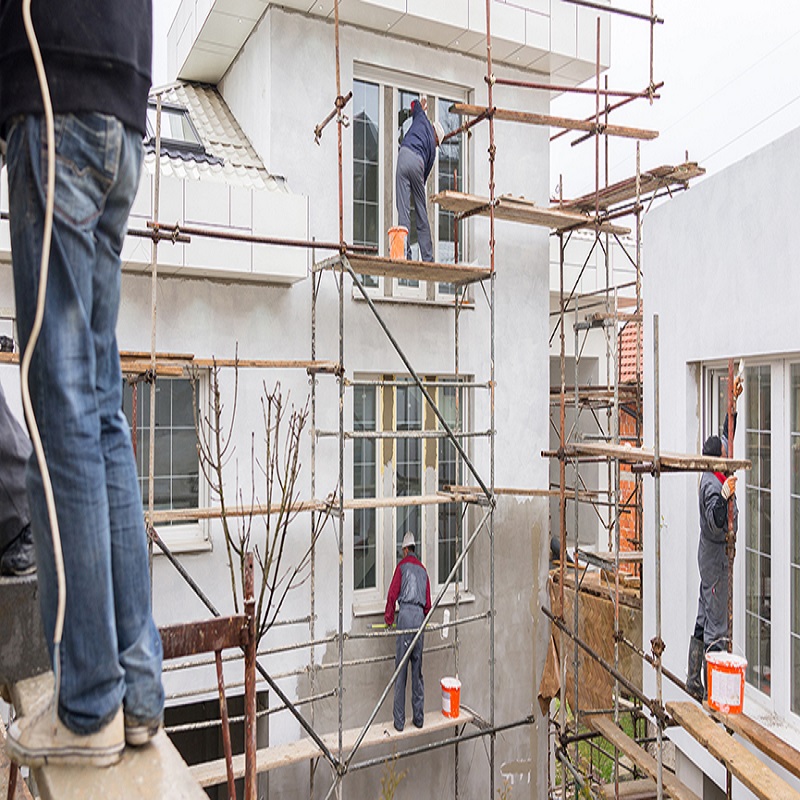Excavation
Or Call: (020) xxxx–xxxx
Excavation is one of the essential services in construction. It allows for further development, and it helps to create all sorts of projects that would not be possible otherwise.
Before deciding about an excavation project, you need to know what type of excavation service is required (there are many!), its pros and cons, why you should choose an experienced company rather than doing it yourself, etc. This blog post will go over everything you need to know before deciding whether or not your property needs excavating!
What is excavation?
Excavation is the process of removing soil or rock from the ground to get further down into it. It is often necessary for construction projects, especially when going deeper than just a few feet underground.
Pros of excavation
Excavation has several benefits, such as
• Building a house or commercial unit
If you’re looking to build your own new house, you will require excavation to ensure that the foundation is deep enough. If you’re constructing a commercial unit or warehouse, there’s also likely going to be some basement area requiring excavation. Excavation is one of the essential parts of construction because it presents challenges and opportunities for builders!
• Installing proper water systems
When installing new plumbing on existing properties – especially older ones – chances are they may not have had adequate drainage installed in them originally, so by excavating, you can make sure this is done properly with all necessary pipework laid out correctly ready for installation when building work begins.
This process can help improve access, too, if it has been challenging to get into certain areas before, like under the house.
• Waste removal
When working on a property that has been abandoned or deplorable, you may need to remove waste materials that will require excavation work, especially if they are lying around too close to your building area!
This could include unearthing old oil drums full of toxic chemicals and other harmful substances. Hence, it’s essential not to neglect this process as it can be dangerous for anyone involved with the construction site afterwards.
• Doing landscaping
After a house has been built on a new piece of land, some landscaping is often done. This could involve removing existing vegetation and replacing it with new plants or trees that will improve the look of your property at an exterior level. This can require excavation work again!
• Installing pipes
For smaller-scale projects, you may have to install drainage pipes from one area of your building site into another section where water needs to be directed down towards the drains for it not to remain stagnant, which would create problems such as mosquitoes breeding nearby so by laying out sound pipe systems before construction starts means these issues won’t occur later on!
• Handling large materials
If you are moving large materials that cannot be moved by hand, then excavation can help remove some of the ground where these heavy objects need to move through so they have a clear path. This is often used with building roads and lots as well.
• Building roads and lots
One of the most common uses for excavation work is when building new roads or developing land areas, which may require significant works such as drainage systems being put in place before anything else happens!
Hazards in excavating your property
There are numerous potential hazards involved with working on an existing construction site, whether it’s for home development or commercial use, but here we will talk about what could happen if there isn’t any proper planning beforehand;
• Collapse of the sides of the excavation
One of the main hazards for those working on excavation sites or doing their DIY excavations is that they may not know potential falling debris and collapse.
• Materials falling onto the people working in the excavation
A common risk to both workers and passersby alike is materials such as bricks, cement blocks etc., falling into the hole without warning; this can cause significant damage and injury if someone was unfortunate enough to stand below it at just the wrong time!
• People and vehicles falling into the excavation
If you’re lucky, no one will fall into your newly created “hole” by accident; however, accidents often happen, resulting in severe injuries requiring medical attention. This poses a more significant threat when children are playing nearby!
• The undermining of nearby structures
This may seem like an unlikely occurrence, but it does happen often enough, either because someone failed to check its structural stability before digging around it or simply due to poor site practice.
• Damage to underground services during excavation
If you plan on excavating your property, it’s essential you research and identify all the utilities that run through it. If they’re not adequately protected and dealt with, severe damage can be caused, leaving householders without running water, electricity or natural gas until repairs are completed. This may take days or even weeks!
• Ingress of water causing flooding
Soil is naturally porous, and if it’s not properly compacted before the excavation process begins, water can seep through, causing flooding or simply making a property uninhabitable until repairs are complete.





Types of excavation services
Below, we will take a look at some of the most common types:
• Topsoil excavation
This type of service is ideal if you add topsoil and other materials to your property. The excavator will use heavy machineries such as front-end loaders, bulldozers, backhoes, and dump trucks to remove anything from trees or debris to old concrete! They can also help level out any slopes to expand your home or build another structure (such as a pool). This method requires very little site preparation before they start work.
• Earth excavation
This type of soil removal is typically done when it comes to residential construction sites. There are no natural resources found in the ground that have any value or use for anyone, so excavating these materials would be pointless and a waste of time. By removing all dirt from an area, you’re making way for foundations, roads etc. – so essentially, earth excavation is just about backfilling after work has been completed.
For commercial projects, however, this isn’t always the case. Some companies will remove anything beneath the surface (i.e. topsoil) because they know what’s under it could potentially benefit them in one form another.
• Rock excavation
If you need a structure that requires a solid foundation, such as retaining walls or something heavy like a bunker silo, rock excavation would be the best option. This type of construction requires removing soil and using explosives to break up rocks before placing them in layers throughout your project site.
• Muck excavation
This type of excavation is often more affordable than other services and can be done by hand. Muck excavation only requires the removal of topsoil, dirt, mud and rock that are visible.
• Unclassified excavation
Sometimes known as “unexcavated” excavations, this type of work involves removing any soil from the site – whether it’s earth, rock, muck, overburden or anything else! They will sieve through all of these materials to find their target material (such as natural resources) which they can then extract and use elsewhere. More often than not, an unclassified excavation requires some form of remediation afterwards because contaminants are found within the soils that need to be removed before they can build on the land again.
• Cut and fill excavation
Cut and fill excavation is a type of excavation where workers first need to cut out the desired materials from the site and then fill them with different materials. This process can also be reversed if required! However, one thing that should always remain consistent throughout this procedure is that the topsoil should never be disturbed – only excavated below ground level to disturb any good quality soil.
• Trench excavation
Trench work involves using machinery that often digs deep trenches into all kinds of land surfaces to lay cables or other utilities underneath roads or public spaces. It’s a prevalent form of construction because it requires little manual labour on behalf of your workforce but still provides excellent results at a low cost compared to alternatives such as piling works.
• Basement excavation
One of the most commonly chosen options for basement excavation is to dig a trench up to 30 metres deep, removing all topsoil to expose the subsoil. This allows you to continue digging until you reach your desired depth which can usually be done without causing any problems with surrounding buildings or structures on site – unless they are particularly close together.
• Road excavation
A road excavation is done to provide a safe passage for vehicles or people. Such excavations can be performed on existing roads and pavements, enabling you to widen the road without closing it off from traffic flow
• Bridge excavation
The bridge excavation is a part of the process involved in building a bridge. It’s usually done when creating an embankment to support the structure, erected above it
• Dredging
This type of excavation involves using equipment such as grab dredgers or dipper dredges – along with other heavy machinery- to remove material from waterways and estuaries for construction purposes. The most common example is mining operations where sand is removed from rivers so that we can use it for land reclamation projects or channel maintenance
• Over excavation
Over excavation refers to the unnecessary digging of material for a project. It’s usually done when contractors don’t know what they are doing or have enough experience.
Why should you go with an experienced company instead of DIYing it yourself?
Since excavation is a serious job, it is crucial to hire experienced contractors who can perform the task safely and effectively. It’s also advisable for homeowners to compare different excavation services before hiring one so that you can choose a company with expertise in removing material from your property.
Top tips to choosing a qualified excavator
Choosing the right excavator is a process that can save you time and money. Here are some tips to help homeowners choose the right contractor:
• Recommendation
Having recommendations from people who have used an excavation service before is vital because they will share their experiences with you. These testimonials will tell you if they were satisfied or dissatisfied with the company’s services, safety precautions taken during work, job cost, and overall performance. You should also confirm whether these referrals come from reputable sources such as family members and friends you trust to give reliable information about companies providing excavation services.
• Experience
Asking for proof of experience on the part of your chosen excavator is very beneficial when choosing one who can do the job well. Every company is obliged to show evidence of experience with their license and certification. Still, not all companies can provide a list of jobs they have done before coming up with an estimate for your excavation project. This means that you should clarify from the beginning if you want them to come up with an estimate based on previous projects they worked on or those similar to yours.
• Certification
In addition, this document will tell you whether or not there have been any complaints against the chosen excavator for poor performance over time and whether they were able to work without being sanctioned by authorities because of environmental violations during different projects undertaken previously at other locations – something which may be relevant when considering doing business with a specific company.
• Insurance
As a potential customer, you should always ensure that the chosen excavation company is well-insured and has worker’s compensation insurance in place. This will allow financial coverage if something goes wrong during an excavation project and one of your employees happens to get injured while working on-site with the excavator for any reason whatsoever.
• Operator
The operator or service provider who will be overseeing and overseeing all work done by their crew must have prior experience in this field – ideally over several years to know how best to handle different scenarios which may arise when digging up earth from areas where there are known environmental constraints such as wetlands, ponds, swamps etc., or places close to certain types underground utilities such as gas lines, water lines, sewer systems and electric cables.
• Cost
The final consideration is cost. The best way to find out what the excavation service will cost is by looking for a company that offers free estimates and quotes before work begins so you know exactly how much it will cost upfront, instead of having any hidden costs once the job has already started.
The process for excavating your property
The excavation process starts with the preparation of the area.
First comes site breaking, which is any disturbance to the ground surface or soil layer that needs to be excavated and removed from a construction zone. Site breakings can include:
- Grubbing is tree removal through cutting down with machinery such as chainsaws, axes, etc. It also includes stump removal by digging out roots and grinding them at ground level using heavy equipment like bulldozers or backhoes. Grubbing only deals with trees larger than six inches wide at chest height (approximately four feet off the ground).
In some cases where special permits are needed, grubs smaller diameter trees may have to be cut into small pieces before being hauled away via trucking services.
- Clearing is the removal of all trees, stumps, and debris from an area requiring excavation. We can do it with heavy equipment like bulldozers or backhoes. Still, it’s usually easier to hire a trucking service for this task as it does not involve digging trenches, only hauling away what has already been cut down.
To ensure clearing goes smoothly, you should first check your local laws governing how much vegetation on private property may remain after excavations are complete; some regional rules even mandate keeping large portions of standing tree trunks intact just in case they need to replace them during construction work at a later date.
Most companies will charge extra if their employees have additional tasks outside those generally associated with the excavation process, such as moving heavy materials from one location to another or hauling away left-over debris.
It is vital to get a written contract spelling out all aspects of your agreement before any work begins on-site; some companies will provide customers who sign up for extended term contracts free labour and equipment upgrades, while others might even agree to decrease their rates after a certain number of jobs have been completed successfully.
If you need help with anything else please feel free to call us on
020 xxxx xxxx
